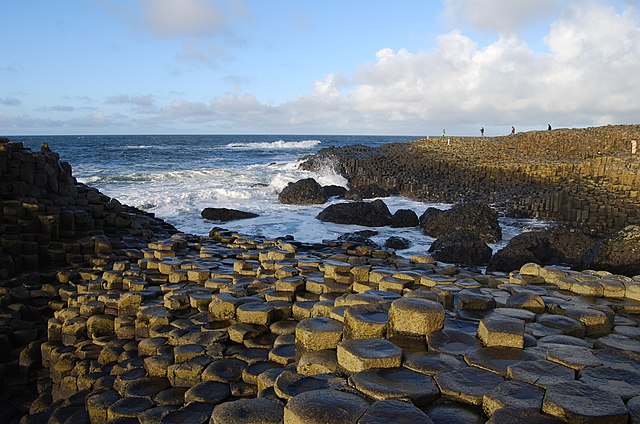
Northern Ireland’s Causeway Coast, renowned for its breathtaking landscapes, has been recognised as the United Kingdom’s most beloved wildlife haven.
Stretching from Lough Foyle to the Glens of Antrim along the northeastern Irish shoreline, this region has secured the top spot in a poll conducted by BBC Wildlife magazine. It surpassed the Isles of Scilly, which claimed fourth place, and Scaur Glen in Dumfries and Galloway, which ranked third. Unexpectedly, Wimbledon Common in London clinched second place.
Tara Shine, an environmental scientist who nominated the coastline, said it was a “place of outstanding natural beauty, with wild dunes, sheer cliffs and, of course, the magnificent rock formations of the Giant’s Causeway”.
As a student at the nearby University of Ulster, she had enjoyed spotting whales, dolphins, seals and basking sharks on the coastline, she said, adding: “I spent some of my most memorable days near, in and under the water here, catching waves off the sandy beach at Portrush, snorkelling with curious grey seals, and scuba diving off the Skerries and below the dramatic cliffs of Rathlin Island, where I glided over stony reefs with dogfish and among shipwrecks with conger eels.”
In celebration of the magazine’s 60th anniversary, 60 conservationists, writers, presenters, and photographers were invited to nominate their favourite nature destination in the UK. The selections were then subjected to a vote on the magazine’s website, with approximately 5,000 participants taking part. The top ten destinations were subsequently presented to a YouGov survey, which sought the opinions of 2,000 individuals to determine the ultimate victor. Now, the Causeway Coast proudly holds the title as the UK’s most cherished wildlife location.
One local person, Richard Lafferty, whose company Aquaholics runs diving training and wildlife boat tours from Portstewart, said he wasn’t surprised. “The waters off the north coast here are very rich in marine life because we have quite strong tidal currents and our waters are full of plankton. It feeds the soft corals and the sponges underwater, which bring in the small fish, the birds and the bigger predators like our dolphins, porpoises, whales and basking sharks.”
Visitors were often surprised by the abundance of wildlife in the deep, warm Atlantic waters, said Lafferty. “For years, we’ve been taking people out [who say], ‘We’ll learn to scuba dive here so when we go abroad, we can do it.’ And then they come back to us after being abroad and they say, ‘We saw more marine life here.’” Of four trips on Tuesday, three included dolphin sightings, he said, while guests on one trip this week spotted six minke whales.
Several stretches of the coastline are owned by the National Trust, which said it was “delighted to be one of the custodians who help encourage wildlife along the Causeway coast”.
The Giant’s Causeway itself is the home of “some very special species, including the pygmy sorrel moth, one of the world’s smallest moths; the northern colletes bee and the black-tailed skimmer dragonfly, as well as the narrow-mouthed whorl snail,” said the trust, adding that stromatolites – stony structures built by colonies of bacteria that it called “one of the earliest known life forms on Earth” – were another surprise find at the Unesco world heritage site.
In a statement, Tourism Northern Ireland said the coastline had “long been recognised as one of the most stunning coastal routes in the world”, and it was “no surprise” that it had also been recognised for its wildlife.
“Among the jagged hills and wave-crashed cliffs, there is an abundance of wildlife in their natural habitat along the route for visitors to enjoy,” it said. “From red squirrels and the Irish hare to Europe’s largest seabird colonies, seals and dolphins, the Causeway coast and glens has a plethora of nature on offer.”
——————————————————————————
At Natural World Fund, we are passionate about stopping the decline in our wildlife.
The declines in our wildlife is shocking and frightening. Without much more support, many of the animals we know and love will continue in their declines towards extinction.
When you help to restore a patch of degraded land through rewilding to forests, meadows, or wetlands, you have a massive impact on the biodiversity at a local level. You give animals a home and food that they otherwise would not have had, and it has a positive snowball effect for the food chain.
We are convinced that this is much better for the UK than growing lots of fast-growing coniferous trees, solely to remove carbon, that don’t actually help our animals to thrive.
This is why we stand for restoring nature in the UK through responsible rewilding. For us, it is the right thing to do. Let’s do what’s right for nature!
Donate today at https://naturalworldfund.com/ and join in the solution!

